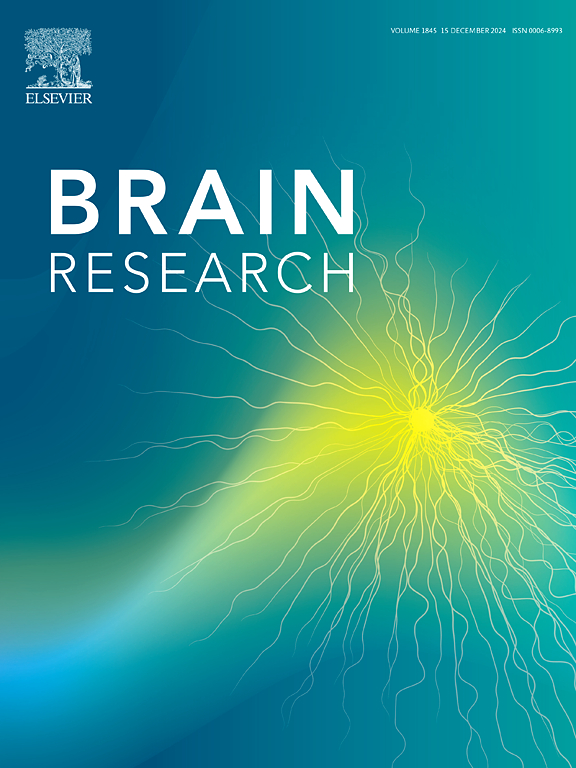Plasma and urinary metabolomic signatures differentiate genetic and idiopathic Parkinson’s disease
IF 2.7
4区 医学
Q3 NEUROSCIENCES
引用次数: 0
Abstract
Parkinson’s disease (PD) is marked by alpha-synuclein accumulation and progressive dopaminergic neuron loss. Using Nuclear Magnetic Resonance (NMR)-based metabolomics, we uncovered metabolic disturbances in idiopathic PD (iPD) and PD linked to LRRK2, GBA1, and PRKN variants in a Brazilian ethnically diverse cohort, free of comorbidities, in comparison to healthy, age-matched controls. In plasma, significant PD-associated metabolites included histidine, acetate, acetoacetate, glutamine, glucose, lipids and lipoproteins, N-acetyl-glycoproteins, and sarcosine. Urine samples revealed alterations in creatine, creatinine, L-asparagine, trimethylamine, 3-beta-hydroxybutyrate, isovaleric acid, glutamine, urea, glycine, choline, arginine, and cysteine in association with PD. Notably, creatine, creatinine, acetate, glucose, and histidine showed pathway influences from LRRK2, GBA1, and PRKN variants. Enrichment analyses highlighted disruptions in glyoxylate and dicarboxylate metabolism (plasma) as well as serine, threonine, and glycine metabolism (urine). Additionally, a metabolite-gene-disease interaction network identified 15 genes associated with PD that interact with key metabolites, highlighting MAPT, SNCA, RERE, and KCNN3 as key players in both plasma and urine. NMR in saliva samples did not show significant differences between PD groups and controls. Our findings underscore PD-associated metabolites, particularly related to arginine metabolism, the urea cycle, glutamate metabolism, glucose metabolism, and gut microbiota. These pathways and gene interactions may serve as potential biomarkers for PD diagnosis and precision medicine strategies.

血浆和尿液代谢组学特征可区分遗传性和特发性帕金森病
帕金森病(PD)以α -突触核蛋白积累和进行性多巴胺能神经元丧失为特征。利用核磁共振(NMR)为基础的代谢组学,我们发现特发性PD (iPD)和PD与LRRK2、GBA1和PRKN变异相关的代谢紊乱,与健康、年龄匹配的对照相比,在巴西种族多样化的队列中,无合并症。在血浆中,与pd相关的重要代谢物包括组氨酸、乙酸、乙酰乙酸、谷氨酰胺、葡萄糖、脂质和脂蛋白、n -乙酰糖蛋白和肌氨酸。尿样显示肌酸、肌酐、l -天冬酰胺、三甲胺、3- β -羟基丁酸、异戊酸、谷氨酰胺、尿素、甘氨酸、胆碱、精氨酸和半胱氨酸与PD相关。值得注意的是,肌酸、肌酐、乙酸、葡萄糖和组氨酸显示了LRRK2、GBA1和PRKN变体的通路影响。富集分析强调了乙醛酸盐和二羧酸盐代谢(血浆)以及丝氨酸、苏氨酸和甘氨酸代谢(尿液)的破坏。此外,一个代谢物-基因-疾病相互作用网络确定了15个与PD相关的基因,这些基因与关键代谢物相互作用,突出了MAPT、SNCA、RERE和KCNN3在血浆和尿液中的关键作用。唾液样本的核磁共振在PD组和对照组之间没有显着差异。我们的发现强调了pd相关的代谢物,特别是与精氨酸代谢、尿素循环、谷氨酸代谢、葡萄糖代谢和肠道微生物群相关的代谢物。这些途径和基因相互作用可能作为PD诊断和精准医疗策略的潜在生物标志物。
本文章由计算机程序翻译,如有差异,请以英文原文为准。
求助全文
约1分钟内获得全文
求助全文
来源期刊

Brain Research
医学-神经科学
CiteScore
5.90
自引率
3.40%
发文量
268
审稿时长
47 days
期刊介绍:
An international multidisciplinary journal devoted to fundamental research in the brain sciences.
Brain Research publishes papers reporting interdisciplinary investigations of nervous system structure and function that are of general interest to the international community of neuroscientists. As is evident from the journals name, its scope is broad, ranging from cellular and molecular studies through systems neuroscience, cognition and disease. Invited reviews are also published; suggestions for and inquiries about potential reviews are welcomed.
With the appearance of the final issue of the 2011 subscription, Vol. 67/1-2 (24 June 2011), Brain Research Reviews has ceased publication as a distinct journal separate from Brain Research. Review articles accepted for Brain Research are now published in that journal.
 求助内容:
求助内容: 应助结果提醒方式:
应助结果提醒方式:


